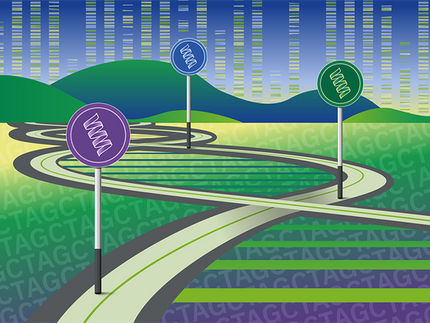Compugen and Tel Aviv University Announce Unique Predictive Method for Identifying Alternative Splicing in the Human Genome
New method does not require EST or microarray data - Hundreds of novel proteins found to date
Advertisement
Compugen Ltd. and Tel Aviv University announced the development of a new method for identifying alternative splicing without the need for either EST (Expressed Sequence Tag) data or microarray experimentation. Hundreds of novel predicted proteins discovered to date using this new predictive method are currently undergoing initial assessment for possible addition to Compugen's growing therapeutic and diagnostic pipeline, and for licensing. The work, which was published in Genome Research (Volume 14, Pages 1617-1623), was a collaborative effort between Compugen's scientists and Professors Ron Shamir and Gil Ast from Tel Aviv University.
The novel method announced today is based on a computer-learning model incorporating algorithms reflecting Compugen's deeper understanding of the process of alternative splicing. Currently, the two most common methods for identifying alternative splicing rely on the mining of substantial experimental data, either EST libraries or microarray results. It is well accepted that these methods cannot detect a substantial fraction of splice variants in the human genome. This is due to the fact that ESTs -- the main source of information for alternative splicing prediction -- are biased towards under-representation of splice variants with low expression levels; and large-scale microarray-based methods cannot sample all possible combinations of tissues, developmental stages, and conditions.
In contrast, Compugen's method, which is based on comparative genomics, can accurately predict alternative splicing based solely on human and mouse genomic DNA.
Using the model developed by Compugen's scientists in collaboration with Professors Shamir and Ast, Compugen to date has discovered over 300 novel predicted splice variants. As this was only an initial application of the computer-learning model, hundreds more novel splice variants are expected to emerge from future applications.
"This development is another example of the unique research that is done at Compugen, relying on proprietary predictive modeling and experimental validation, rather than high-throughput experimental approaches. The early use of this splice variant model has already increased our collection of potential therapeutic proteins and diagnostic markers beyond that which was possible with our industry leading EST-based LEADS predictive model," said Mor Amitai, Ph.D., President and Chief Executive Officer of Compugen Ltd. "Therefore, we expect this development to allow us to substantially narrow the knowledge gap between the human genome and proteome by providing a much fuller picture of splice variants. Together with our other understandings of important biological phenomena, such as antisense and RNA editing, this capability is enabling us to continuously improve our computational platforms and discovery engines, which provide the foundation for our drug and diagnostic product programs."
"The development of this exciting computational method is the fruit of a collaborative research project performed at Tel Aviv University and Compugen," said Isaac T. Kohlberg, Chief Executive Officer of Ramot at Tel Aviv University Ltd., the technology transfer company of Tel Aviv University. "This is an example of a unique collaboration between the university and industry, which benefits basic science as well as product-driven research, and eventually the lives of patients worldwide."















































